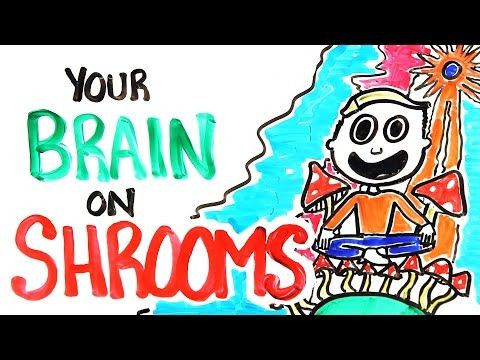How Magic Mushrooms Affect Your Brain: From Higher Levels Of Awareness To Hallucinations

It’s believed magic mushrooms have been around for up to 9,000 years, originating in the Sahara desert, where rock art showed masked figures holding mushroom-like objects. Since then, their use has shifted from spiritual and divinatory ceremonies to recreational use, as people all around the world seek powerful psychedelic experiences. The drug’s psychoactive chemical, psilocybin, is known for its hallucinogenic effects, which are just as strong as its putrid flavor — the mushrooms are grown in dung. But how do psilocybin mushrooms, as they’re called in the scientific community, affect the brain?
The good people over at ASAP Science got us covered. In their video, they show how the body breaks down psilocybin into psilocin, which has a similar chemical structure to the neurotransmitter serotonin. That means it can also bind to the brain’s serotonin receptors and mimic the neurotransmitter’s effects, albeit at a higher magnitude. This causes an explosion in neural connections, oftentimes creating connections that didn’t previously exist, which leads to higher levels of awareness, clarity, and perception.

It also causes hallucinations, however, but not in the way you’d think. As one Quora user explains: “Hallucinations rarely involve ‘seeing an object that isn’t there.’ And when that happens, it is like when children look at a pile of clothes in the dark and see a monster. The hallucination comes from projecting onto the environment and misinterpreting what is seen.” This person describes typical hallucinations while on mushrooms as “more subtle. When looking at things, they can have a certain “sense” about them. Out in nature, one can have the feeling of having just noticed something, but now it’s gone. A forest can feel enchanted.”
While psilocybin mushrooms aren’t considered addictive, they can cause bad trips in up to 22 percent of people, according to ASAP Science. Watch the video to learn more.



























